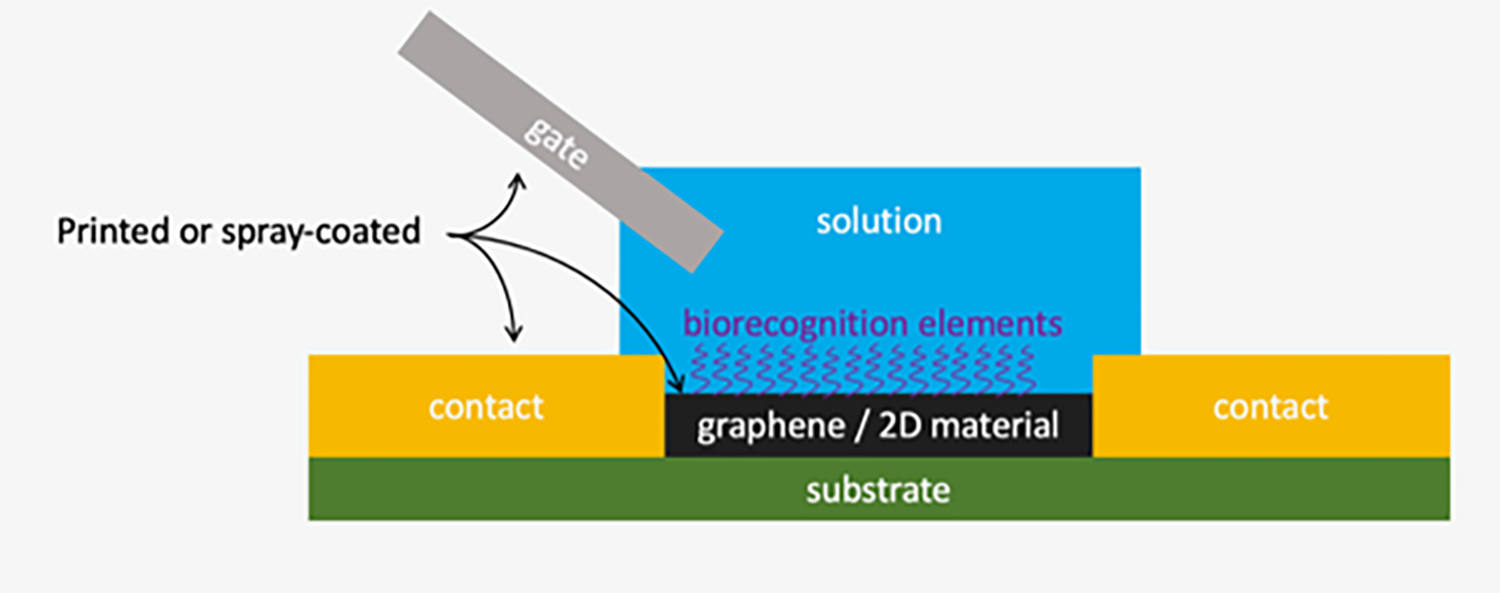
The group works towards the development of new biosensors and biosensing systems which use 2D materials as the main transducers, enabling sensitive, easy-to-manufacture and low-cost sensors exploiting the key features of 2D materials.
For instance, we create field-effect transistor biosensors using 2D materials coupled to biorecognition elements such as aptamers or enzymes.
Typical targets for our sensors range from simple ions, through small molecules such as glucose to larger analytes such as antibiotics.
This is closely linked with our work on novel 2D materials which enable new types of sensors as well as the development of fibre-based systems. We utilise and develop scalable deposition techniques for the 2D materials, such as spray-coating and ink-jet printing, to enable us to produce low-cost and repeatable sensors.
Wearable sensors are an important area of work for us - for this reason the group works on suitable structures for sensors that are not just flexible but also combined with special substrates, such as microneedles suitable for accessing interstitial body fluid for precision biological analysis.
Contact
Dr Felice Torrisi
Senior Lecturer in Chemistry of Two-Dimensional Materials
401A
Molecular Sciences Research Hub
White City Campus
f.torrisi@imperial.ac.uk
+44 (0)20 7594 5818